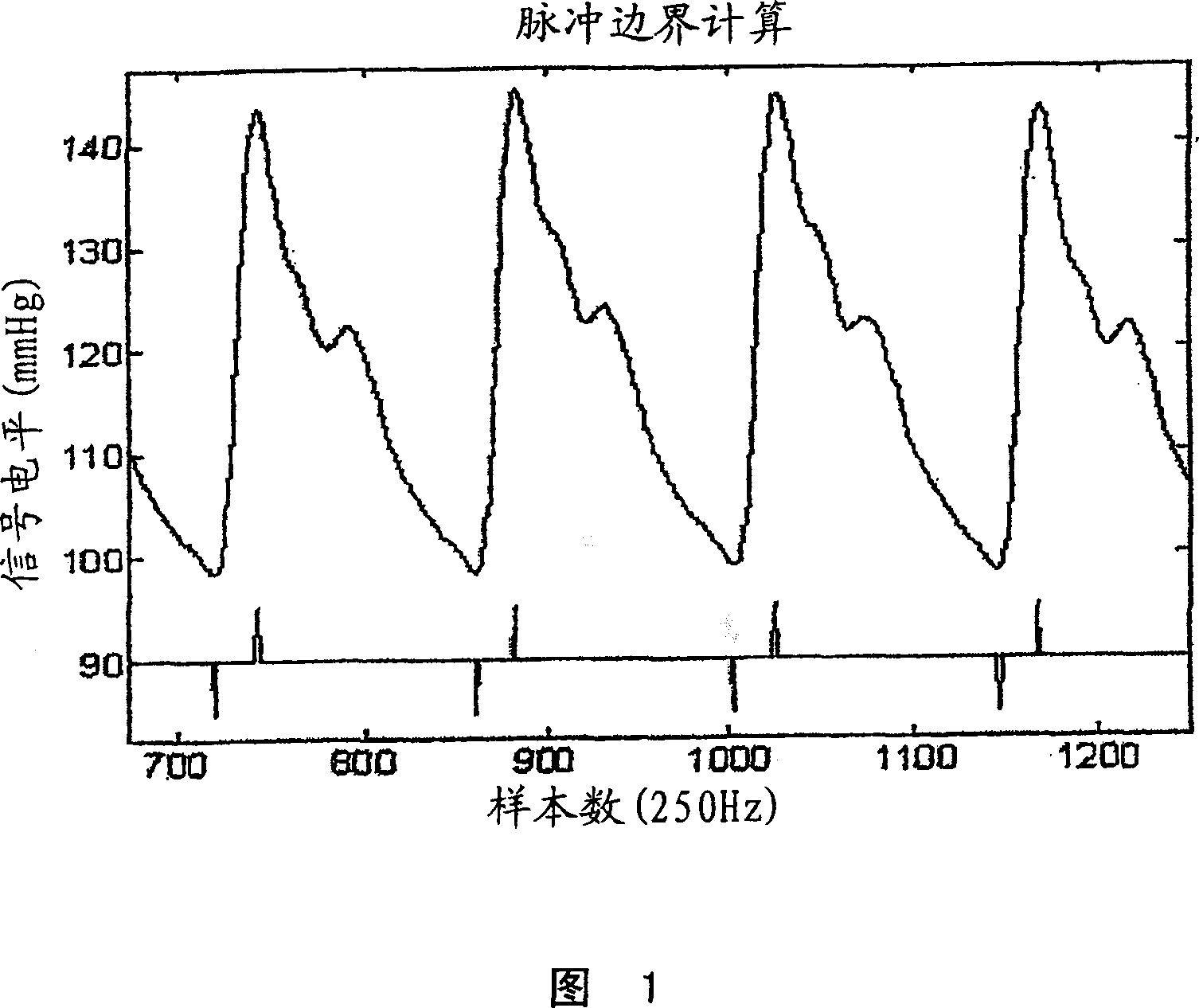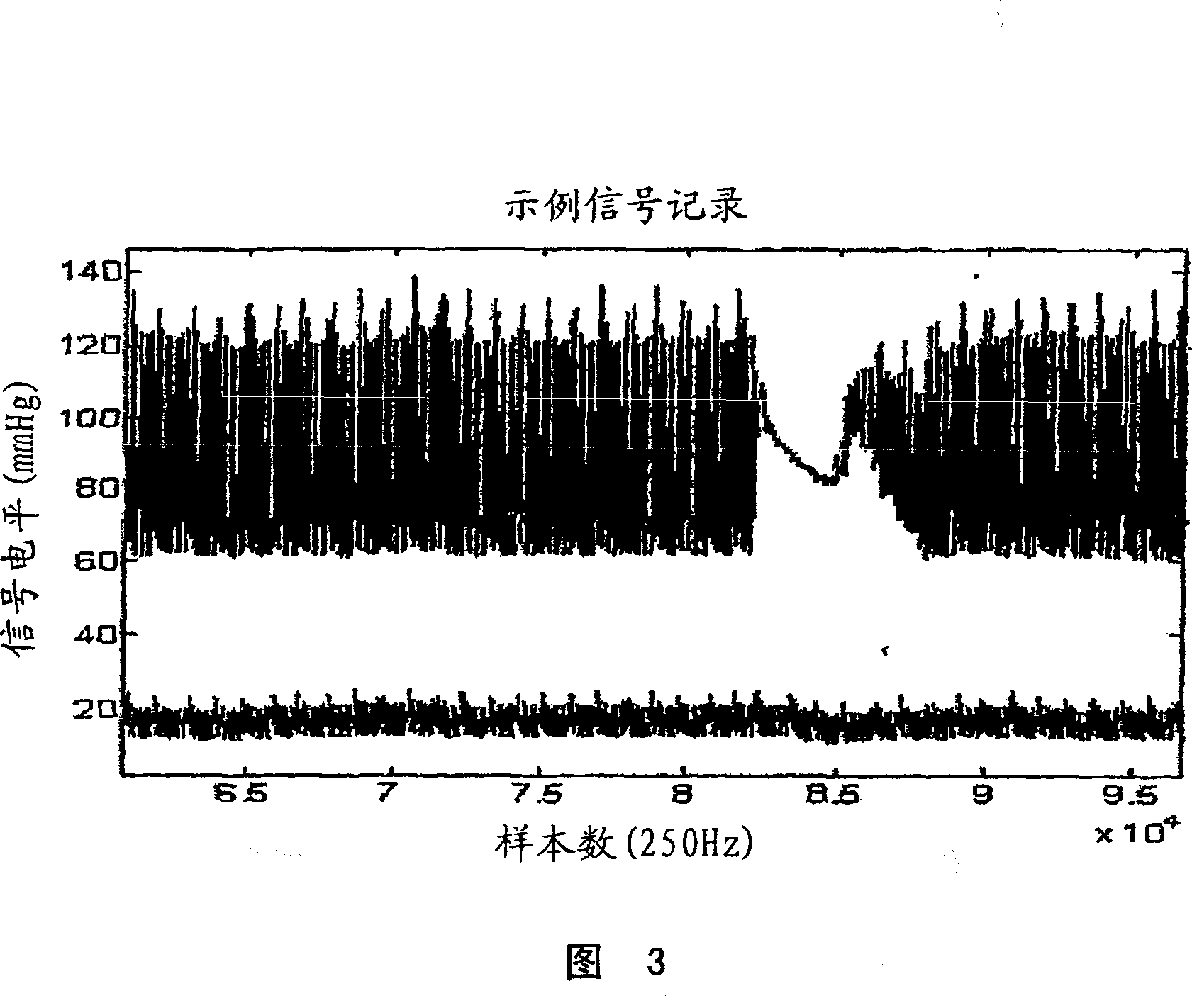Determining intracranial pressure non-invasively by acoustic transducer
An acoustic transducer and acoustic technology, applied in methods and systems, collecting and processing acoustic data to non-invasively derive accurate ICP measurement values, can solve problems such as large volume, ischemia, and fragility
- Summary
- Abstract
- Description
- Claims
- Application Information
AI Technical Summary
Problems solved by technology
Method used
Image
Examples
Embodiment 1
[0264] Empirical based on the use of TCD V_mca and invasively determined serial ABP measurements as variables ICP Prediction Results of the Study
[0265] A prototype system that collects data, derives and applies the nonlinear relationship between cranial vessel velocity and ABP variables can be assembled using commercially available components. This prototype consists of a laptop computer using a National Instruments (NI) 6204-E PCMCIA data acquisition (DAQ) card, a box containing the NI-DAQ card's exposed backplane and microphone input matching circuitry, designed to fit in and space A dedicated adapter for the signal output port of the laboratory telemetry unit, and a TCD 100M power M-mode digital transcranial Doppler device from Spencer Technologies and a console with a standard TCD ultrasound transducer, and FDA-approved for mechanical The headgear device fixed on the head. Spencer Technologies' TCD 100M device does not make any modifications to the FDA-approv...
Embodiment 2
[0279] ICP prediction results based on experimental research and ANN training and verification
[0280] Using blood pressure derived directly from the arterial line, or using arterial line-based ABP data reduced to simulated ABP data obtained from a blood pressure cuff, the prototype device described in Example 1 and in this specification The described nICP determination method was successfully tested on eighteen (18) patients at Harborview Medical Center in Seattle, Washington. A detailed description of the results for 8 of 18 patients is given in Example 1. Other results are summarized below.
[0281] To determine the constants in the ICP prediction method, we collected data from a set of patients (the "training set") for whom we knew the invasive measurements of ICP as well as acoustic backscatter and ABP. For patients with focal lesions in the training group, their ICP was measured invasively from the same cerebral hemisphere as the lesion, and acoustic backscat...
Embodiment 3
[0290] Using the experimental system described in Example 1, another feasibility and validity test of the above method can be performed. Acoustic backscatter, ABP and invasively measured ICP data were collected from a patient set ("training set") comprising 25 patients. For the training group of patients with focal lesions, ICP was measured invasively from the same cerebral hemisphere as the lesion, and acoustic backscatter was also measured from this side. Acoustic backscatter data was collected from the MCA, and MCA velocity values were derived from the acoustic backscatter using conventional Doppler techniques. Using the data described above and the neural network training protocol described above, an empirical algorithm was derived.
[0291] The derived algorithm was then tested in an iterative mode to determine ICP for 21 patients using only the acoustic backscatter and ABP data of the 21 validation patients for whom invasively measured ICP data had been collected ...
PUM
 Login to View More
Login to View More Abstract
Description
Claims
Application Information
 Login to View More
Login to View More - R&D
- Intellectual Property
- Life Sciences
- Materials
- Tech Scout
- Unparalleled Data Quality
- Higher Quality Content
- 60% Fewer Hallucinations
Browse by: Latest US Patents, China's latest patents, Technical Efficacy Thesaurus, Application Domain, Technology Topic, Popular Technical Reports.
© 2025 PatSnap. All rights reserved.Legal|Privacy policy|Modern Slavery Act Transparency Statement|Sitemap|About US| Contact US: help@patsnap.com



